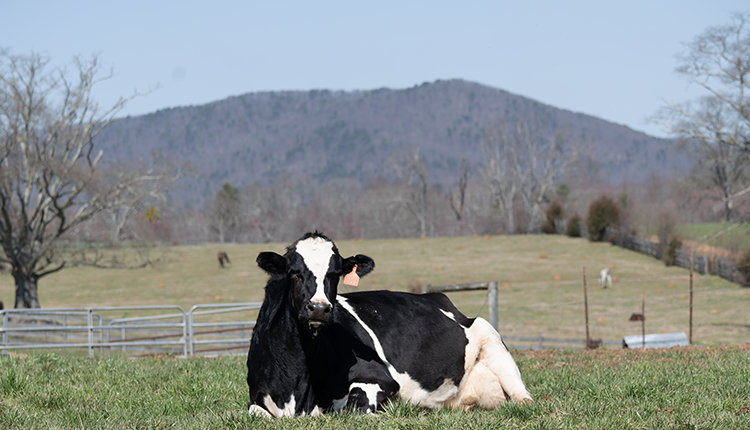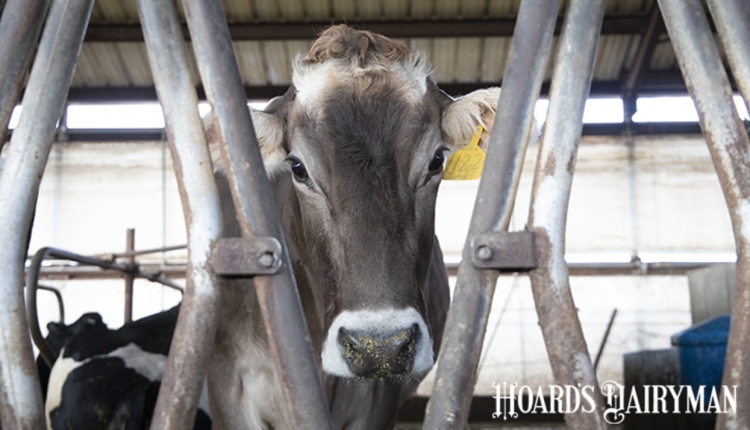New genetic evaluations will be available April 2, 2024, with the Council on Dairy Cattle Breeding (CDCB) publishing updates for 50 traits and four selection indices on 82 million dairy animals. The most significant change for the April 2024 triannual evaluations is an adjustment in the trait model for six CDCB health evaluations – resistance to milk fever, displaced abomasum, ketosis, mastitis, metritis, and retained placenta.
Since these traits debuted six years ago, the number of health records in the national cooperator database has tripled or quadrupled, depending on the trait. With this data surge, the trait model has been adjusted with new variance component estimates and adjusted weights, effective with April 2024 evaluations. This evolution follows the typical progression of newer traits.
These CDCB evaluations for disease resistance were first launched for Holsteins in April 2018, Jerseys in April 2020, and Brown Swiss in August 2022. Variance components were originally estimated in 2018, when Holstein records available ranged from 1.2 million to 2.2 million per trait. The current volume ranges from 4.3 million to 7.7 million for the three breeds, with mastitis having the most records in CDCB’s database. The available records by trait are summarized below.
What are the expected impacts?
To investigate the impact of the upgrades made to the health evaluations, a test using data from the December 2023 run was completed before implementation for April. In this comparison of the previous and new model, correlations of genomic estimated breeding values (GEBV) for five of the traits was greater than or equal to 0.96 for Holsteins, 0.90 for Jerseys, and 0.92 for Brown Swiss. For displaced abomasum, lower correlations were observed (greater than or equal to 0.95 for Holsteins, 0.82 for Jerseys, and 0.81 for Brown Swiss) due to the largest change in heritability.
With this model adjustment, variation in Predicted Transmitting Ability (PTA) for some individual animals, particularly Jerseys and Brown Swiss, can be expected. The impact on Net Merit is expected to be very small, given the weighting of these traits in the index.
For complete detail on the April 2024 evaluation changes, view
this post from CDCB and USDA’s Animal Genomics and Improvement Laboratory (AGIL).
How are health traits effectively used?
To streamline selection decisions, these health traits are incorporated into the national genetic index,
Net Merit (NM$), which includes more than 40 traits such as milk, fat and protein yield, livability, fertility, and conformation, weighted according to the traits’ relative economic value. In the NM$ formula, the six health traits are combined, with a total weight ranging from 1.7% to 2.1%, depending on the breed.
Health evaluations are an important tool to help producers select healthier, more profitable animals. Certainly, cows with genes that keep them healthy are more profitable than cows with health conditions that require extra farm labor, veterinary treatment, and medicine.
The CDCB health evaluations are defined as disease resistance. The resulting PTAs are presented as percentage points above or below the breed’s average resistance for that disorder, with more positive values being favorable. The larger the positive values, the more favorable the genetic resistance to the disorder.
Let’s look a bit deeper at mastitis. Assume the Holstein resistance to clinical mastitis is 90%, which represents a 10% incidence rate. If Bull X has a PTA of +3.0 for mastitis resistance, daughters of Bull X would, on average, be more resistant to mastitis by 3 percentage points more than the population average. The resistance rate among Bull X’s daughters should average 93% (90 + 3), given a significant number of daughter records. This can also be interpreted as an incidence rate equal to 7%.
Alternatively, let’s assume Bull Y has a PTA of -4.0 for mastitis resistance. Its daughters would be expected to have an average resistance equal to 86% (90 – 4) as observations are accumulated or, conversely, a mastitis incidence rate of 14%. Differences in extra costs and lost milk income from these two alternatives equates to a hefty difference in herd income.
What’s the data source of CDCB evaluations?
Like other genetic evaluations produced by CDCB, the health evaluations are derived from national data recorded in Dairy Herd Information (DHI) herds and transferred to the national cooperator database managed by CDCB.
Accurate genetic evaluations are possible through continued cooperation among many industry sectors. Dairy producers are most critical for their active and consistent on-farm reporting of health events. The dairy records providers and the dairy records processing centers facilitate the transfer of health data from DHI herds to the CDCB database. Then, strict editing and proven methods are applied to ensure the most reliable data is included in the genetic evaluations. The foundational research and development for all U.S. genetic evaluations has resulted from the long-standing collaboration between CDCB and AGIL.
Because of this cooperation, strong foundational research, and a robust national database of animal genotypes and phenotypes, dairy herds worldwide can use genetic selection to help improve cow health, productivity, efficiency, and sustainability. The genomic revolution has considerably enhanced the rate of genetic improvement and our ability to develop new, important traits. The health of dairy cows continues to improve, and continued progress can be made through genetic selection for disease resistance. Today’s consumers expect assurances of sustainability and animal well-being as they make food and beverage choices, and genetic selection provides tools for continued progress of U.S. dairy.
To comment, email your remarks to intel@hoards.com.(c) Hoard's Dairyman Intel 2024 April 1, 2024










